Poultry - Hens for eggs
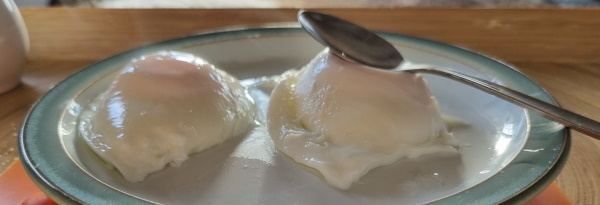
We keep hens because we like fresh eggs. Two poached Dorking eggs standing up because they were laid the previous day. If your egg white is runny, the egg is past its best.
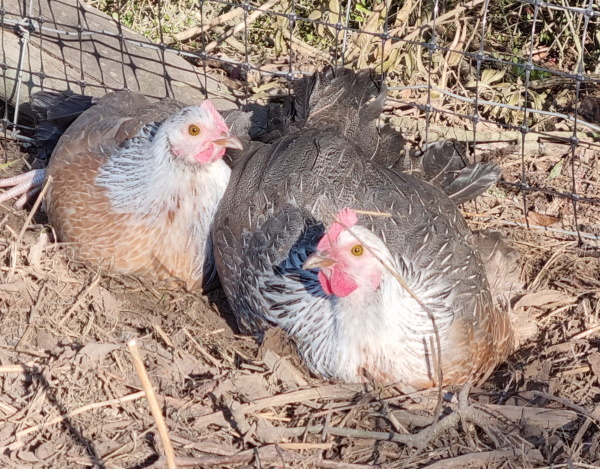
These Dorking hens are enjoying a dust bath and lounging in the sun. Laying hens need fresh water and quality layer pellets. They also peck at short fine grass and relish insects and grubs which they find while out during the day.
I've kept many breeds of chickens over 50 years and found they have personalities just like us. I settled on Dorkings, and only Dorkings because I like them best.

Even before we built our own house, 23 years ago, we had a wooden hen house with two rooms built. The nesting boxes can be shut off from the roosting area. I only keep Dorkings now. They are an ancient breed and some say they were brought to England by the Romans.
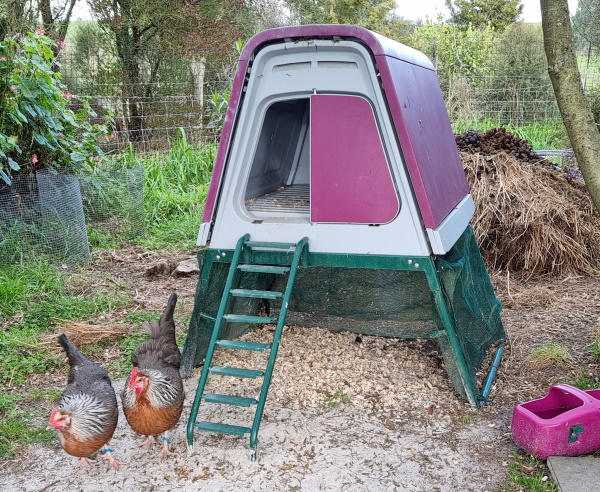
Two young chickens are enjoying their Omlet Go-Up house made of a special plastic (think Lego) that can be recycled eventually. I've never seen a mite in the plastic housing. I keep the broodie and young chickens up by our house as I love to see them.
Breeding
When I want to hatch eggs, maybe from a particular hen, I collect the eggs over a number of days, check them to make sure they are a good size and shape and very clean. I put them in a cool dark place, turning them daily.
When a hen goes broody, she will stay in the box after laying, refuse to leave and make clucky sounds. I move the hen onto the nest where I have placed the eggs at dusk.
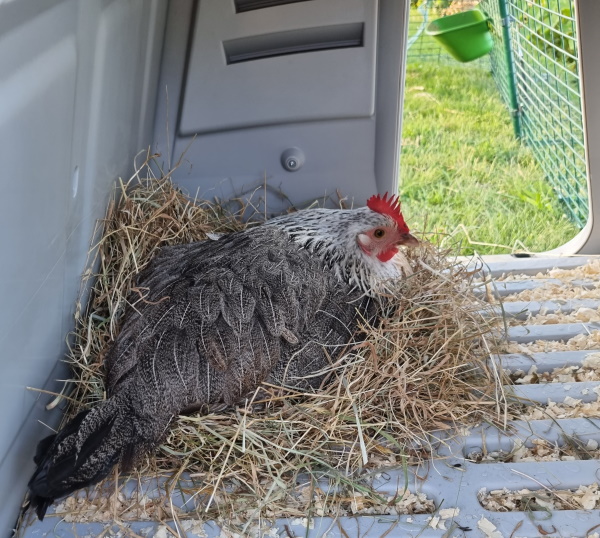
If you pick up a broodie hen, she will go limp and maybe squawk, but when you put her down on eggs, she will soon make herself comfortable and snuggle down rearranging the eggs.
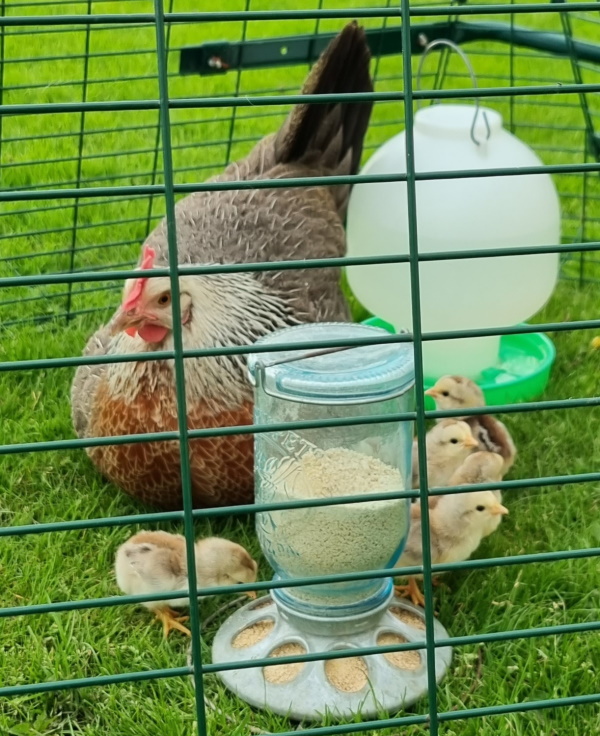
Doris is one of my favourites. She is a reliable hatcher and great mother. I use an Omlet Go.
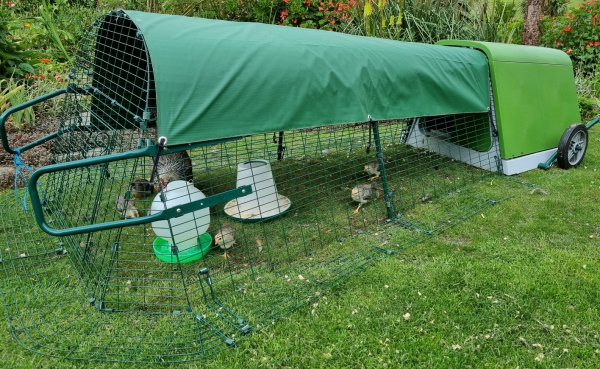
When her chicks hatch, they are safe in the Go's run as it has a skirt to deter predators.
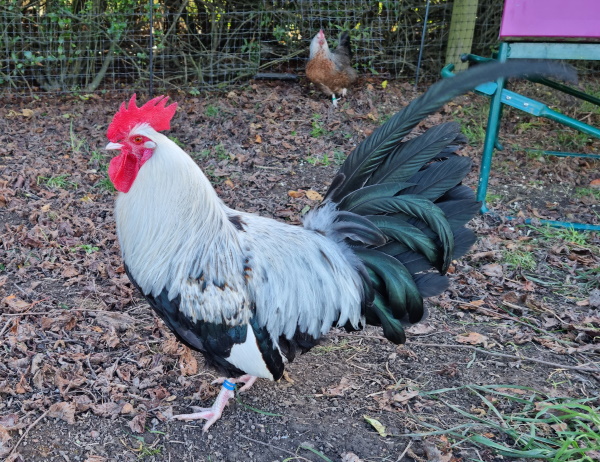
Our newest rooster. I bought some fertile eggs from a very good breeder.
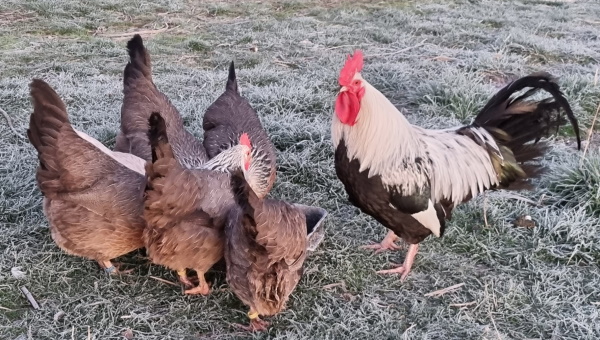
This rooster allowed the hens to feed first on a frosty morning. When a hawk was circling overhead one day he stood his ground while the hens all ran to safety. The hawk decided to go elsewhere.
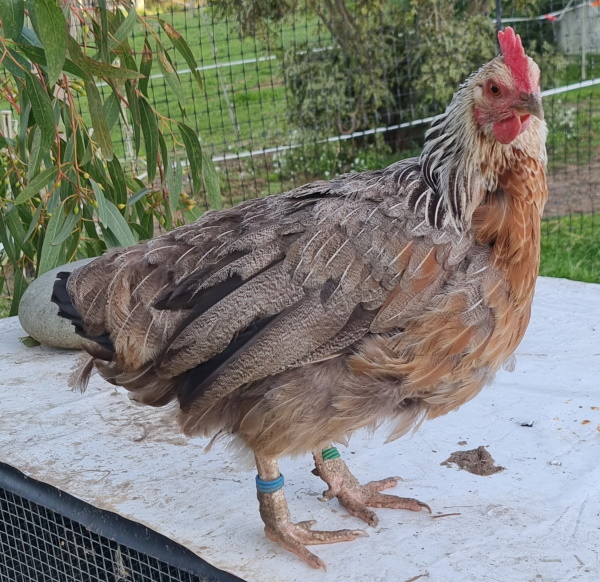
Once a year a hen goes off the lay and over a period of about six weeks loses her feathers. She looks terrible but soon fresh feathers come through and she is once again gleaming in her 'new outfit'.
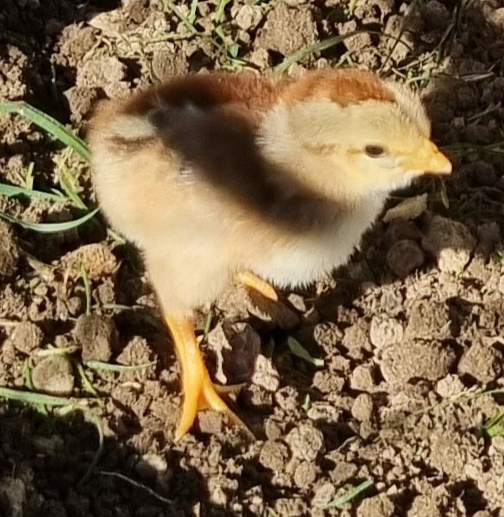
When first hatched you can tell which sex baby Dorkings are. The females have Cleopatra eyeliner and a dark triangle shape on their forehead.
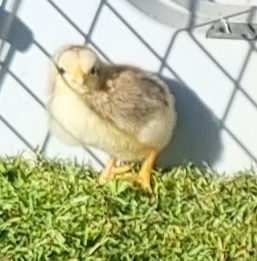
Male Dorkings have a lighter coloured head.

It is better not to sit a hen on too many eggs as the hen rotates the eggs, and as the inner eggs are moved to the outside they become cold and die. It is important to judge the size of the hen with the number of eggs. The hen will take time off the nest for very brief intervals to eat and drink. 21 days later you should have chicks.
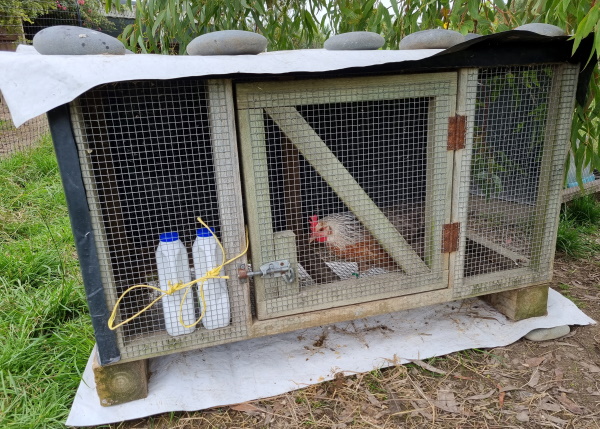
Most Dorking will go broodie, but I find that three days in my raised up hutch fixes that if I do not want her to sit on eggs. The cool air underneath puts them off. Very soon she will be laying again.
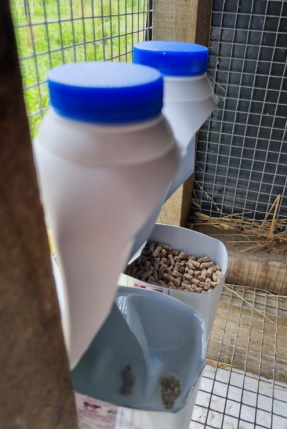
Cut down 2 Ltr plastic milk containers make great feed and water containers for this purpose.